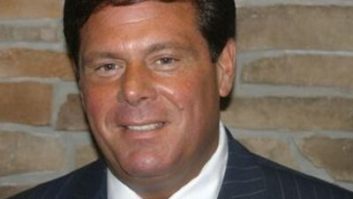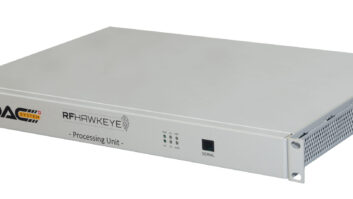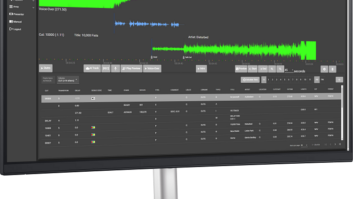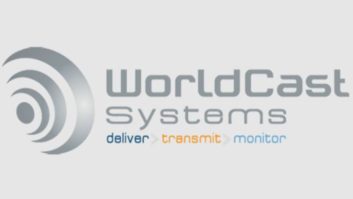NextRadio is promoting a new audience measurement tool that it says will allow radio sellers to offer advertisers proof of who heard their ads when listening to FM radio through smartphones.
The NextRadio hybrid radio app allows users with radio-enabled Android phones to tune in local FM stations; its developers say their new Dial Report digital audience measurement service provides useful analytics and insights about an advertiser’s on-air campaign by measuring results and listener behavior.

“The Dial Report provides a digital measurement report of analog radio usage and is intended to be a tool for radio sellers. It’s a recap of analog investments by advertisers,” said Paul Brenner, CEO and president of NextRadio. “The information we grab from the smartphone allows us to then aggregate the data and measure audience.”
The service can provide location-based data, demographics and radio listening data within 48 hours of spots airing. Users will be able to determine campaign listens, views, interactions, listener proximity and in-store traffic, according to NextRadio.
“The Dial Report provides meaningful radio data that agencies and brands can use to prove the value radio spots bring to their marketing efforts. Being able to see the proximity of a listener is unprecedented in the radio industry,” Brenner said.
He said the report works to paint a demographic profile of NextRadio listeners with quick feedback to radio sellers for sharing with clients.
“We can monitor the listener and come up with data on the listener. We know what station they were listening to and when they were listening. We know their gender and age. The data collected can be used to satisfy the huge demand advertisers have for data attribution.”
The NextRadio app was developed by TagStation LLC, which is owned by Emmis Communications, with support from NAB Labs. TagStation is a cloud-based software platform that allows radio stations to manage album art, metadata and enhanced advertising on various devices.
Brenner said NextRadio is working with Katz Radio Group — which represents most of the major radio groups and is owned by iHeartMedia — and with advertising agencies interested in the Dial Report.
The app launched in 2013. Emmis views it as an important part of the industry’s efforts to boost the reach of terrestrial radio. They say it provides listeners with visual and two-way features, and adds digital capabilities including such data attribution for advertisers.
“Return on investment is what advertisers want, and the Dial Report measures campaign results and listener behavior for advertisers that enhance their on-air radio campaign with the NextRadio app,” Brenner said.
TIMELY TWEAKS
Industry observers told Radio World that advertisers want this type of analytical information.

Mark Fratrik, senior vice president and chief economist for research firm BIA/Kelsey, said the report gives terrestrial stations an ability to provide advertisers the sort of data they get from other online and digital platforms.
“And the 48-hour turnaround is very important. That quick feedback will allow advertisers to tweak a message in a very timely fashion if they have to. It should help make radio more competitive,” Fratrik said.
He thinks radio is uniquely positioned to take advantage of the more detailed data NextRadio can provide. Stations have sales staffs; they have relationships. “But now they have to get people thinking of radio beyond just listening on air.” Fratrik said radio sellers currently get similar feedback from their online sales of website banners and client video views.
The Dial Report has gained the attention of advertisers and agencies, said Erica Farber, president/CEO at the Radio Advertising Bureau.
“The dealmakers are watching this carefully and NextRadio in general,” she said. “There is no question the more data radio sellers have, the better off they are. It helps to position stations as far as brand consideration and purchase cycles, and helps to reset the advertiser’s understanding of the role radio can play.”
The data from the new service will help local, regional and national advertisers, Farber said, who all desire the same information for their marketing plans.
“It’s all about collecting rich data. Advertisers are asking for analysis that shows who they are reaching and how often they are reaching in a specific audience with their message. NextRadio presents another channel for advertisers to use radio to reach consumers.”
One advertising analyst expressed skepticism of the impact the Dial Report will have on advertisers, who are increasingly comfortable with utilizing digital media.
“Measurement is the key reason advertisers are now enamored of digital media and perhaps the main reason they’ve lost faith in radio,” said Gordon Borrell, CEO of Borrell Associates. “But it’ll be an uphill battle for the Dial Report to significantly impact the analog radio industry. Agencies will have to learn to trust and embrace the data, and that will take time and education.”
Research by his firm, which tracks and analyzes trends in local advertising and licenses advertising data to some 1,000 media companies, shows advertisers “are not necessarily interested in how big an audience is, but how many of their potential customers are listening and how the platform can deliver ads to only those people,” he said.
SETTLED WITH SPRINT
The app itself has a broader footprint now. NextRadio developers say 63 million Android phones have FM chips unlocked and are therefore compatible with NextRadio; they expect the number to reach about 83 million by the end of this year. It has agreements in place with Sprint, AT&T, Verizon and T-Mobile to activate FM chips in smartphones. However, Apple notably is still not on board with iOS phone activation.
A recent NAB Pilot report found that in the third quarter of 2016, the number of smartphones sold with FM reception capability equaled the number sold without it for the first time. The vast majority of phones sold without were Apple iPhone, according to the report. Brenner said NextRadio remains “focused on telling our story and sharing updates with Apple.”
On another front, the app developer now has settled its debt with Sprint, Brenner said. NextRadio had agreed to pay the cellular service provider $15 million per year beginning in 2013 to embed the app on smartphones it sold, but at the end of 2015, NextRadio was $14 million in arrears to Sprint, according to SEC filings by parent company Emmis Communications.
NextRadio declined to provide details of the settlement but said it is “in good standing” with Sprint. Last year Brenner told Radio World that after the agreement ended in August 2016, “NextRadio will not be paying any cell carriers to activate the chip in smartphones. Instead, the new business model going forward will be a revenue sharing formula” tapping the revenue generated by TagStation.
NextRadio is closing in on having 4,000 radio stations on board with TagStation, Brenner said, for which they pay an annual fee, and “expects to announce a major group deal yet this year that will make a big impact.” Another 7,000 stations participate with logos only, at no cost.
The company is eyeing more international expansion in 2017, Brenner said. The hybrid app launched in Mexico, Canada and Peru in 2016. He sees Colombia, Brazil and possibly Argentina being added in 2017.
Brenner said NextRadio is “now focusing more heavily on the connected car integration.” NextRadio and HD Radio developer iBiquity, now part of Tessera Technologies Inc., announced in 2015 an effort to cooperate on a single auto platform.










